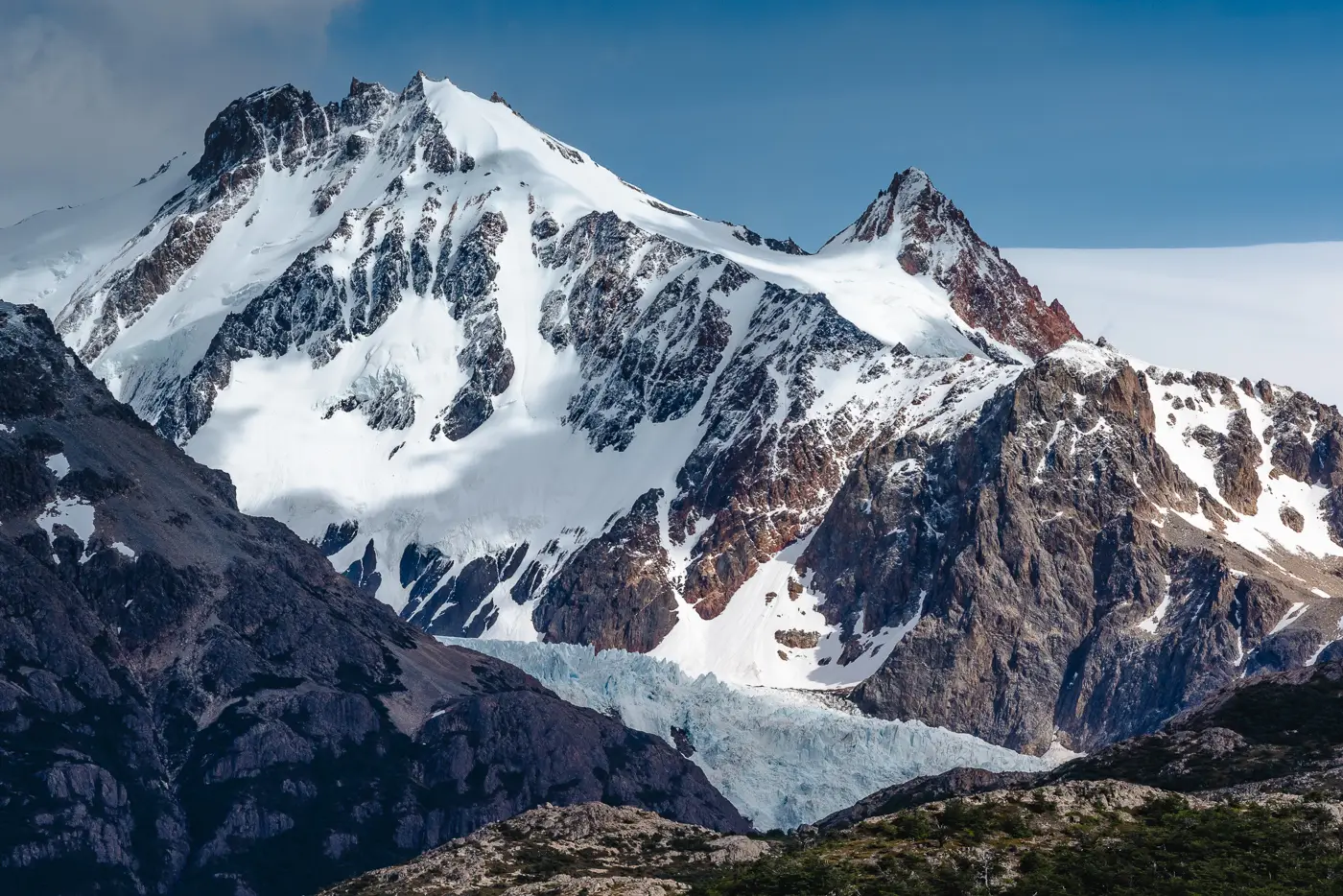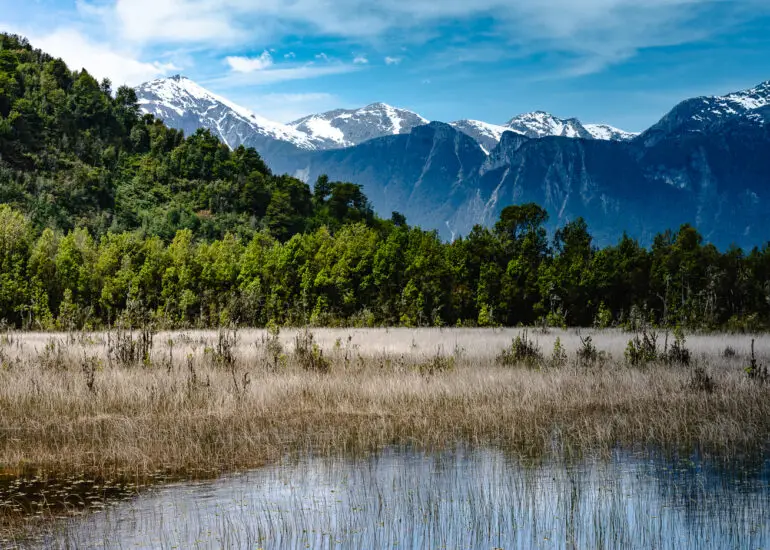Argentina and Chile
“Fin Del Mundo” (The End of the World)
Wining and Climbing Our Way to the End of the World
After 12-months of traveling through Mexico, Central America and other “developing” countries in South America we were ready for a change. Due to 100 years of economic turmoil, Argentina has never become a “developed” country. However, Argentina and Chile are certainly more “developed” than Colombia, Ecuador, and Bolivia with better roads, safer food and water, and the first good wineries of our trip. This, combined with a mix of amazing adventures, beautiful landscapes, and fascinating culture, would make Argentina and southern Chile a great place to finish our trip.




Northwest Argentina
We began our trip in Argentina’s northwest by racing through the beautiful Quebrada de Humahuaca to get to a vet after Oz ate, or was bitten by something that caused his entire face to swell up.
After Dexamethasone was flowing through his veins (and the cortisol was lowering in ours), Oz’s face-swelling had subsided, and we headed to Salta, a relatively sophisticated city famous for its peñas (folk music clubs) and música folklórica. Next, we headed through the beautiful Quebrada de Cafayate to Cafayete, where we spent several days exploring the wineries of Cafayate and staying with a friend of a friend at his winery. Dieguito introduced us to the art of Argentinian asados and his amazing wines including Malbecs, co-fermented red blends and Torrontes right out of the barrel. Dieguitos’s wine was the best we have tasted on our entire trip. The fact that he is one of only a small handful of biodynamic winemakers in all of South America made his wines even more special.
Next, we headed to a remote region of northwestern Argentina called Antofagasta de la Sierra in the northwest of Catamarca province. This region is dominated by volcanoes and volcanic fields, including incredible rock formations including the spectacular Camp de Piedra Pomez pumice field. We spent several days there, exploring two of the best overlanding routes which pass flamingo filled lakes, pumice fields, salt flats and volcanos. If you are an overlander with a 4×4 vehicle, you shouldn’t miss this region.
From Antofagasta de la Sierra we wound our way south on Route 40, stopping to admire the Utah-like rockscapes of Parque National Provincial Ischigualasto before jogging to the west of route 40 through the Sierra del Tigre to do some land sailing on the dry lake beds of Barreal. After a hike to the Aconcagua Base Camp, we finally found ourselves in another wine region, this time Maipu and Valle de Uco to the south of Mendoza. We enjoyed traditional and new cleaner style Malbecs before heading to Northern Patagonia.

Patagonia
Patagonia is a huge, remote region at the southern end of South America shared by Argentina and Chile.
We started our journey in Patagonia on the Camino de los Siete Lagos, a beautiful road that winds its way past crystal clear lakes and through sophisticated towns like San Martin de los Andes, Villa la Angostura and San Carlos de Bariloche.
From there, we crossed the Argentinian-Chilean border in Futalefú and headed through the deep valley formed by one of the most famous rivers in the world. Locals refer to the valley as “un paisaje pintado por Dios” – a landscape painted by God. And as you drive through the valley, with the summits of glaciated peaks towering 6,000 feet above and the turquoise Futalefú river flowing below, it’s easy to see why. Despite offering world class fly fishing, hiking, kayaking and rafting, relatively few tourists explore the Futalefú valley. The first settlers, who today live in tiny farming and fishing communities, began arriving to the densely forested region in 1912 and have maintained their fierce independence and gaucho culture. When the clouds lifted, we also explored the glaciated mountains surrounding the Northern Carretera Austral including Parque Pumalin and Parque Nacional Quelat.
But the highlight of our trip to Northern Argentina was a one week “expedition” down the Futaleufú, one of the world’s top river rafting destinations. What makes the river special is not only its continuous class IV and V rapids but its setting in the beautiful Futaleufú valley. After the Futaleufú, we followed the Carretera Austral south to Puerto Rio Tranquilo where we took a boat trip to the beautiful Marble Caves before heading east back into Argentina over through the Chile Chico border crossing toward southern Patagonia.
The most famous parks in Southern Patagonia include Parque Nacional Los Glaciares and Parque Nacional Torres del Paine. We spent most of our time exploring Parque Nacional Los Glaciares using El Chaltén and El Calafate as base camps. The highlights were our hikes in the Fitz Roy Range and our trip to the Perito Moreno Glacier. But there’s so much more to see in Southern Patagonia including more remote parks like Parque Nacional Perito Moreno which we’ll return to someday.
“Fin Del Mundo” (The End of the World)
Finally, we headed south to Ushuaia or the End of the World.
The end of the Panamerican Highway is actually in Parque Nacional Tierra Del Fuego, which we found to be a bit anticlimactic. In addition, the park was a bit crowded. In large part, this was because it was Christmas week, and also because Ushuaia is frequented by cruise ships whose passengers disembark and sign up for one day tours to the park and other locations near Ushuaia. Our trip to the “end of world” at the naval station at the end of J37 felt a bit more satisfying. This long, dirt road, along the northern edge of the Fjords of Tierra del Fuego was a more fitting “end” to our trip and we spent a final windy night in a campground with some of our favorite Patagonian friends, Andean Foxes and Buff-Necked Ibis.
With heavy hearts, we made our way north toward Buenos Aires along the Atlantic Coast of Argentina. The Atlantic Coast has a lot of wildlife, including penguins, seals and whales. Our favorite trip was Isla Penguinos, home of a huge colony of Southern Rockhopper penguins with their amazing orange beaks, red eyes and yellow and black spiky feathers on their heads.
We finished up in the beautiful city of Buenos Aires which is often called the “Paris of South America”. The city is full of amazing parks, restaurants and, of course, tango clubs, one of which we went to on our last night in South America before we prepared to ship back to the US.












